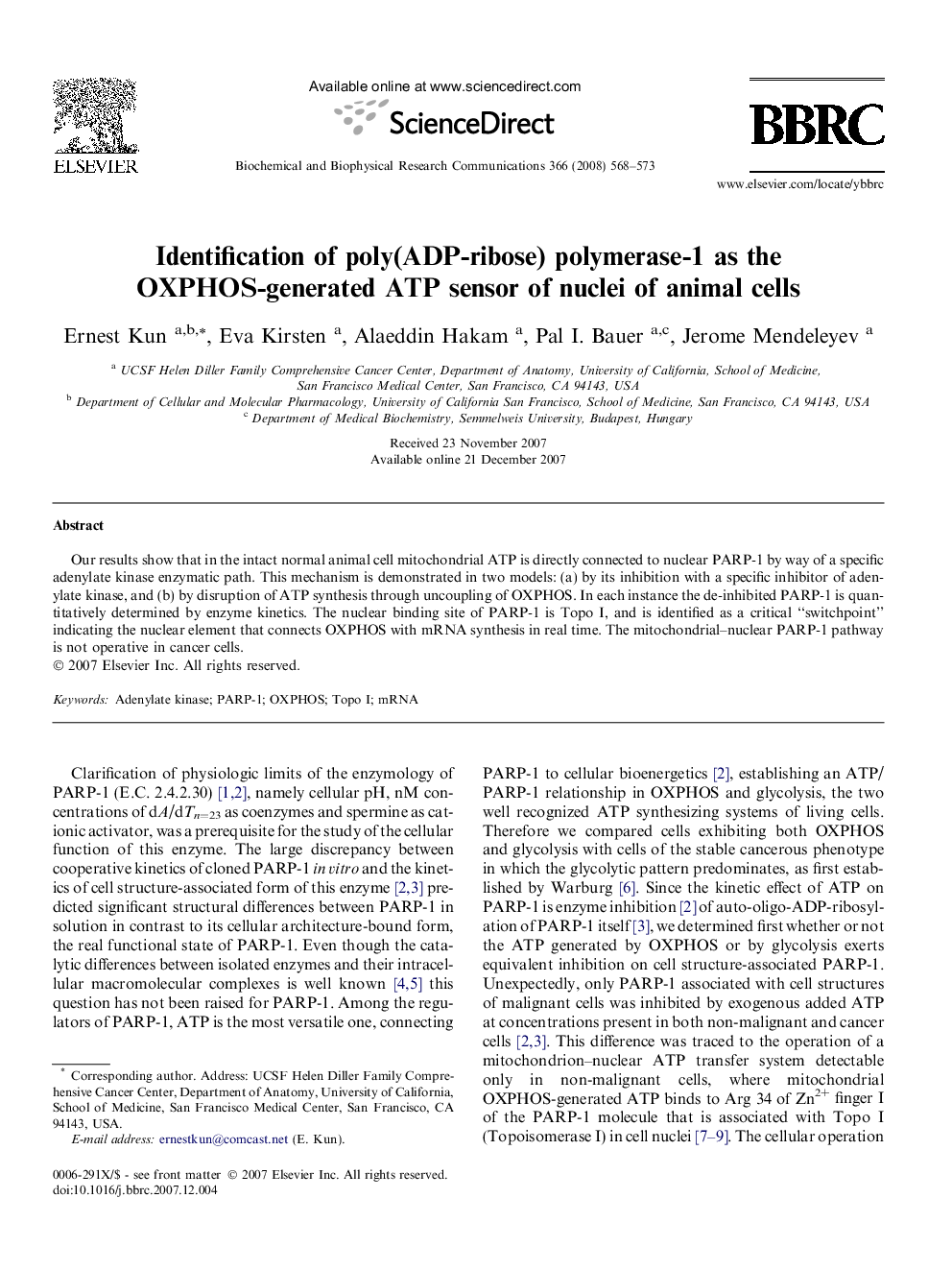| Article ID | Journal | Published Year | Pages | File Type |
|---|---|---|---|---|
| 1936552 | Biochemical and Biophysical Research Communications | 2008 | 6 Pages |
Abstract
Our results show that in the intact normal animal cell mitochondrial ATP is directly connected to nuclear PARP-1 by way of a specific adenylate kinase enzymatic path. This mechanism is demonstrated in two models: (a) by its inhibition with a specific inhibitor of adenylate kinase, and (b) by disruption of ATP synthesis through uncoupling of OXPHOS. In each instance the de-inhibited PARP-1 is quantitatively determined by enzyme kinetics. The nuclear binding site of PARP-1 is Topo I, and is identified as a critical “switchpoint” indicating the nuclear element that connects OXPHOS with mRNA synthesis in real time. The mitochondrial–nuclear PARP-1 pathway is not operative in cancer cells.
Related Topics
Life Sciences
Biochemistry, Genetics and Molecular Biology
Biochemistry
Authors
Ernest Kun, Eva Kirsten, Alaeddin Hakam, Pal I. Bauer, Jerome Mendeleyev,
